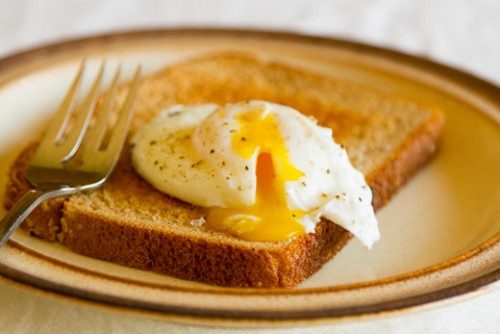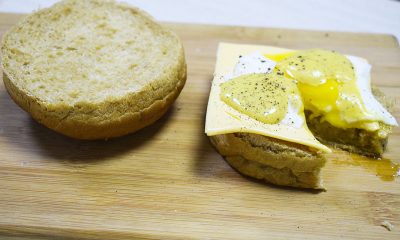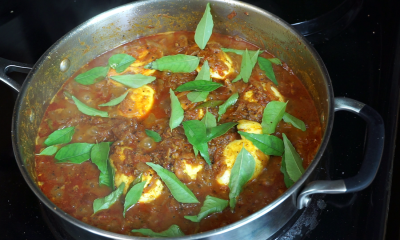Eggetarian
Oeufs Pochés Recipe
A poached egg is one that has been dropped without its shell into a pan of barely simmering liquid and cooked for about 4 minutes until the white is set but the yolk remains liquid. A perfect specimen is neat and oval in shape, and the white completely masks the yolk. The most important requirement for poaching is that the eggs be very fresh; the yolk stands high, the white clings to it in a cohesive mass, and only a small amount of watery liquid falls away from the main body of the white. A stale egg with a relaxed and watery white is unpoachable because the white trails off in wisps in the water leaving the yolk exposed. If the eggs are not quite as fresh as you could wish, simmer them in their shells for 8 to 10 seconds before poaching. This will often firm up the white just enough so it will hold its shape around the yolk when the egg is broken into the water. And a fine solution is the oval metal perforated egg poacher, carried in most gourmet-type cookware shops. Simmer the eggs 10 seconds in their shells, as suggested; place the poachers in the simmering water, adding vinegar if you think your eggs need help, and break an egg into each poacher, time as usual, and you get a beautiful egg. A final solution is the 6-minute boiled egg, l’oeuf mollet; when you peel it, you can substitute it for poached eggs in any recipe.

| Servings |
MetricUS Imperial
|
Ingredients
Ingredients
|

|
Instructions
How to poach eggs
- To transfer the egg from the shell to the water you may either break it directly into the water as described below, or break it into a saucer, tilt the saucer directly over the water, and slip the egg in.
- Pour 2 inches of water into the pan or skillet and add 1 tablespoon of vinegar per quart of water. Bring to the simmer.
- Break one of the eggs, and, holding it as closely over the water as possible, let it fall in. Immediately and gently push the white over the yolk with a wooden spoon for 2 to 3 seconds. Maintain the water at the barest simmer and proceed with the other eggs in the same manner.
- After 4 minutes, remove the first egg with the skimmer and test with your finger. The white should be set, the yolk still soft to the touch. Place the egg in the cold water; this washes off the vinegar and stops the cooking. Remove the rest of the eggs as they are done, and poach others in the same water if you are doing more.
- (*) The eggs may remain for several hours in cold water, or may be drained and refrigerated.
- To reheat the eggs, trim off any trailing bits of white with a knife. Place them in hot salted water for about half a minute to heat them through. Remove one at a time with a slotted spoon. Holding a folded towel under the spoon, roll the egg back and forth for a second to drain it, and it is ready to serve.




















